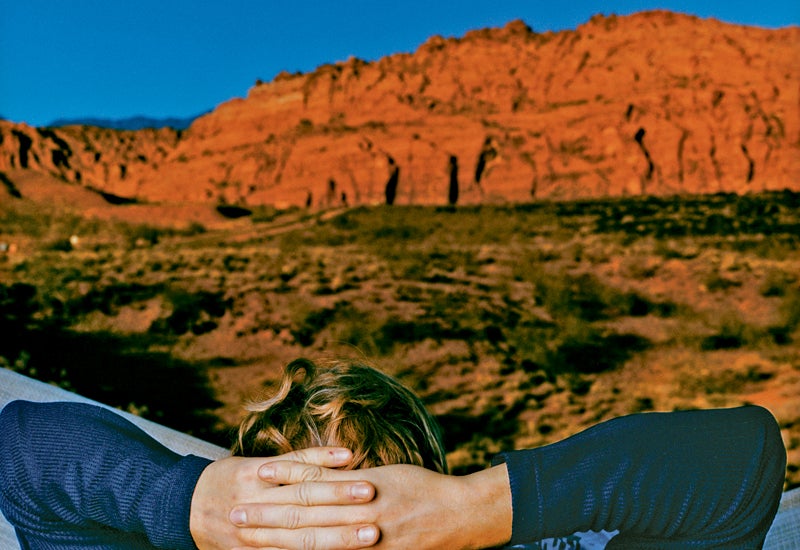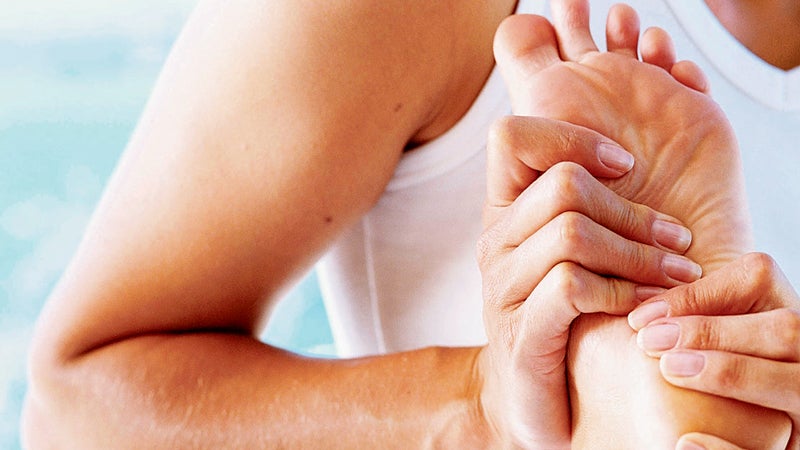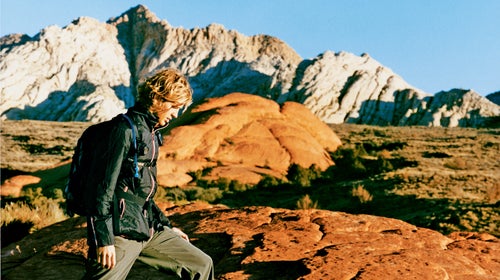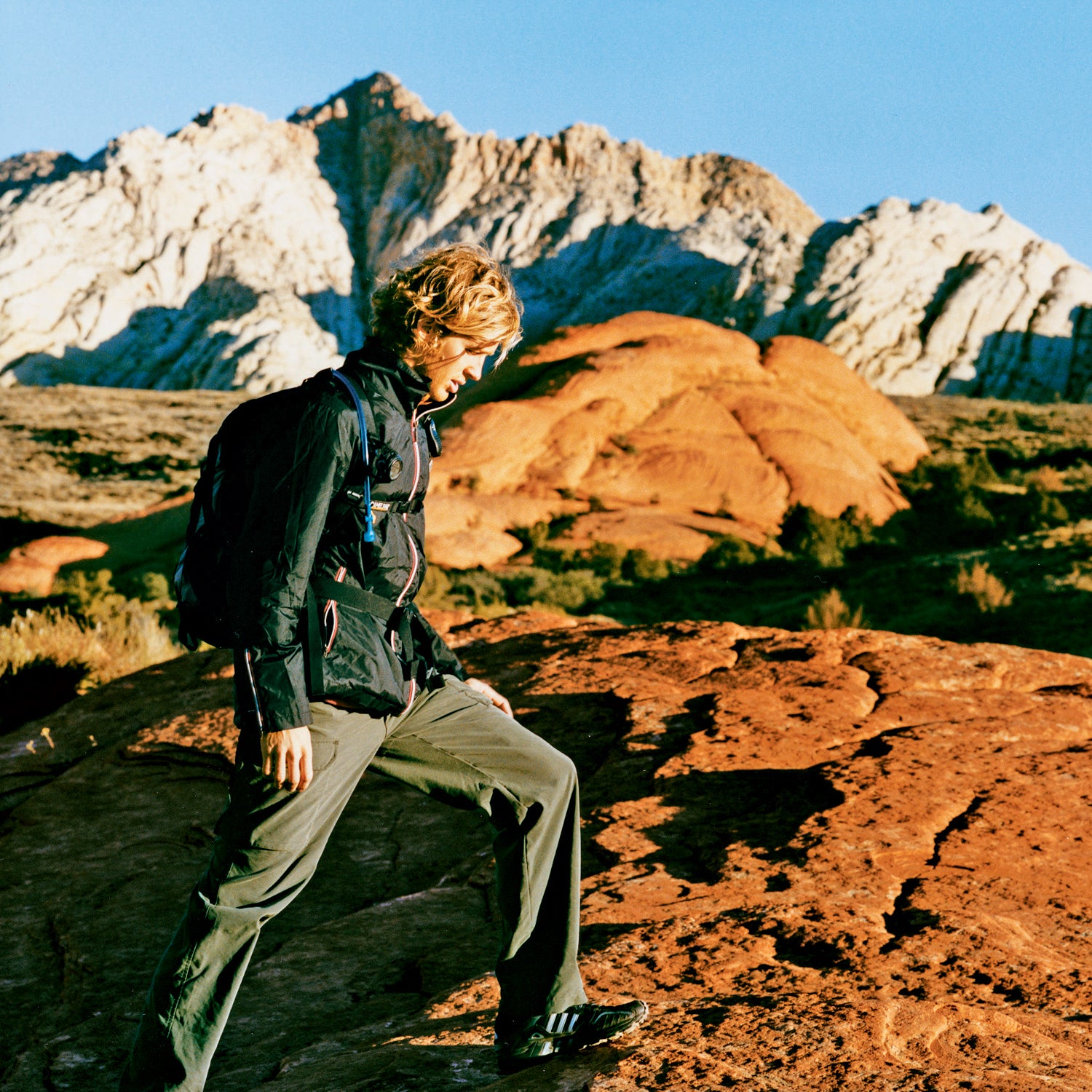It can happen on a ski slope, your supple legs effortlessly absorbing one shock after another, hips swaying easily, the mountainside flying past you in blissful moments that feel beyond time. It can happen on the crest of an uphill climb, quads pumping like pistons powered by breaths so deep they seem to drive the bike pedals all by themselves before you exhale into shouts of joy as you realize that you’ve stayed ahead of the stronger riders in the pack. It can happen in the charged silence shared by the united crew of your river raft after deftly paddling through the violence of thunderous whitewater. And it can happen as you slump exhausted back to earth after a transcendent outdoor experience, the energy coursing through a body that feels in sync with itself and everything around it.
This is the Whole Athlete, a human being whose immaterial dimensionsÔÇömind, emotions, spiritÔÇöhave been developed in such close concert with the physical self that you can’t even imagine them as separate anymore. Instinctively, you already understand this principleÔÇönothing provides that sense of life’s interconnectedness more than the natural world. But only recently have spas, gyms, and fitness experts begun to develop integrated strategies to help you achieve this state of grace, by supplementing your usual cardio and strength workouts with disciplines such as yoga, tai chi, meditation, Pilates, massageÔÇöany practice that works not only your body but all facets of your being.
The statistics tell it all: The market for healthy, environmentally friendly products and servicesÔÇöfrom organic produce to acupunctureÔÇöis now a staggering $227 billion. Men made up nearly 30 percent of the 45 million spa-goers last year. Yoga practitioners in the U.S. have swelled to 15 million. Colorado’s Shambhala Mountain Center meditation retreat expects to have 15,000 visitors this year, up from 1,400 five years ago.
Even a bodybuilding stronghold like Gold’s Gym teaches the downward dog to many of its three million members worldwide. Pro sports stars and weekend warriors alike have finally realized that something is sorely lacking in the traditional American’s good-ol’-boy approach to getting in shape: Run and pump weights until you drop, then do some more.
“You can’t just train one part of yourselfÔÇöyou have to train all of them,” says James Loehr, a sports psychologist who has helped athletes from Monica Seles to Eric Lindros excel. “All these thingsÔÇöyoga, mental training, martial artsÔÇörespect the fact that we are not a one-dimensional species. They all better integrate the body, tuning it to the way it actually works.”
The Change That Does You Good

Fortunately, there’s already a world of destinations in place to help you learn how to become a Whole Athlete. We’re talking about spas. Whether you call them wellness spas or adventure retreats, there’s no better place to refocus your approach to health and fitness in one shot. Not only women but menÔÇöwho originally may have shown up in the name of relationship harmonyÔÇöare discovering holistic-fitness programs such as yoga, meditation, and strength conditioning geared specifically for an active lifestyle.
Sports stars like snowboarders Ross Powers and Barrett Christy relish the recuperative break from the wear and tear of competition that a spa delivers, and they apply a holistic approach to their training because they know this stuff works. “I’ll fit in a massage for my muscles, a Pilates class to build strength, and yoga to maintain my flexibility,” says Christy. “Off the snow, it’s about balancing out my body’s shortcomings.”
Studies have shown that in only eight weeks, meditation can start to shift activity in the brain’s prefrontal cortex from the fight-or-flight right hemisphere to the more accepting left hemisphere (which comes in handy whether you’re feeling pressure from the boss or from a precarious rock overhang). Cardiac patients have found that yoga lowers their cholesterol and blood-pressure levels and can increase their cardiovascular circulation. Deep-breathing techniques help keep the blood oxygenated and the muscles relaxed during key moments of athletic activityÔÇöwhether banging a tennis ball with a loud grunt or pedaling a bike up a steep hill.
Good Definition

Massage:┬áMost forms have the same goal: to increase blood flow, thus loosening tight muscles and joints, which speeds your body’s recovery from physical stress. Lucky members of the USPS Pro Cycling squad receive a deep-tissue massage after every competition during race season, but Dave Bolch, a massage therapist for the team, advises massages year-round: “Go once every month if you can. You’ll still help your muscles heal.”
Meditation: This process of attempting unbroken concentration on your breath or a chant has moved from the realm of the spiritual to the mainstream. A common variation on meditation for athletes is visualization, where, say, a downhill skier envisions a successful race-course run. Practiced daily, both meditation and visualization clear the mind of distractions and focus it on the task at hand, making you better prepared to overcome any obstacle.
Pilates:┬áThe core-conditioning program developed by Joseph Pilates during World War I was embraced by ballet dancers when Pilates opened his New York studio in the 1920s. The discipline uses full-body movements that simultaneously stretch and strengthen the core muscles of the torso, improve the body’s alignment, and focus breathing for maximum efficiencyÔÇöall without adding bulk to your frame. Cyclists, runners, and other endurance athletes employ Pilates workouts twice a week or more to add power where it matters: the torso.
Rest: Rest is probably the one element of overall health you ignore first. You need close to eight hours of shut-eye each night, along with periodization training, in which you incorporate a couple of days or weeks doing light or no exercise, to get stronger. Your body will thank you with a sharper brain and a reduced chance of burnout.
Tai Chi:┬áAccording to its daily practitioners, this Chinese martial art utilizes slow, graceful movements to build up life force (chi) and reconcile opposing forces within the body. The typical results are improved mental focus, controlled breathing, and better coordination and balanceÔÇöskills that will aid you in any sport.
Whole-Foods Diet:┬áAn approach to eating that increases energy levels, fends off illness, and keeps you in top form. Eat five to nine servings a day of fruits, nuts, and vegetables, in addition to unprocessed cereals and oats and free-range meatsÔÇöthe foods our bodies evolved with over thousands of years. The key is to avoid processed products like chips, bleached-flour bread, hot dogs, and, of course, Cheez Whiz.
Yoga:┬áThe practice originated in India more than 3,500 years ago in several different forms, but it’s hatha, the most physical form, that athletes from the NBA to NORBA have embraced. In the U.S., hatha mostly blends elements that use highly aerobic flowing movements with those that focus on the nuances of stationary poses. Two to three yoga sessions per week will result in increased flexibility and coordination, more efficient breathing, and faster recovery times, and can lower injury rates. Visit Vail, Colorado’s Yoga for Athletes studio and you may run into skier Jonny Moseley using a hatha-based program to reduce the stress that mogul skiing pounds into his body.
The Fasting Track
Life on 1,500 calories a day is fun. Really. Or is writer Stephanie Pearson╠ř│ˇ▓╣▒˘▒˘│▄│Žż▒▓ď▓╣│┘ż▒▓ď▓Á?
I’m fresh off the massage table, floating on a schooner under a full moon, being serenaded by a Brazilian classical guitarist while eating a dorado fillet caught so recently that it melts before it hits my esophagus. But the Portuguese lyrics are soon drowned out by my forbidden-dessert fantasy: slurping down a Peanut Buster Parfait from Dairy Queen. If I’ve learned one thing at Body & Soul ║┌┴¤│ď╣¤═°s, it’s that deprivation doesn’t come easily to me.
Given my tequila-sipping, latte-downing, DQ-eating ways, I decided to make my vacation an attempt to purge myself of seven dietary sins: coffee, ice cream, M&Ms, margaritas, chips, guacamole, and chiles rellenos. I also wanted feelings of world peace, inner harmony, empty beaches, and days packed with intense exercise, yoga, and massage. In short, I was on the hunt for an exotic, transformative fit farm. I found just about everything at Body & Soul ║┌┴¤│ď╣¤═°s, on Ilha Grande, Brazil. The three-year-old spa was started by two Irish-expat buddies, 47-year-old Michael Mitchell, a former Peace Corps volunteer, and 39-year-old Aidan Boyle, a former chemist. Setting out to create a detox adventure in paradise, Boyle and Mitchell found a spot on 75-square-mile Ilha Grande, a subtropical island in the Atlantic, two hours south of Rio de Janeiro, with 3,000-foot peaks, zero cars, and endless miles of hiking trails. Then they outfitted their Shangri-La with a nutritionist (who plans low, low-calorie meals, with no sugar, alcohol, or caffeine), a chef, ten personal trainers/hiking guides, a rotating staff of yoga instructors, and three massage therapists. On a drizzly day last June, after an hourlong launch ride from the mainland, eight other clients and I arrived at what could have been the set of Fantasy Island. Standing under swaying palms, the grinning B&S staff greeted us with a kiss on each cheek.
We stayed at Pousada Manaca, Body & Soul’s private beachside inn, just a few minutes’ walk from the island’s main village of AbraÔÇ╣o. Our days started with 7 a.m. yoga, followed by herbal tea, fruit, and granola. Then we’d paddle two hours in sea kayaks, crossing turquoise water to reach a seaside trailhead. We’d hike a few hours to a wild beach and sink in the sand, drained by the sun-and-calorie vortex, before replenishing with veggie couscous and a banana. Then we’d take a swim in the crashing surf before hiking back to our kayaks. The goal: to paddle back to the pousada in time to savor every last second of an hourlong massage. After dinner, we’d try to learn capoeira, the wildly popular Brazilian martial art/dance, or play bongos in impromptu jam sessions, all while under the influence of… water.
The trip’s literal high point was on the last day, when the guides upped the hiking ante by challenging us to climb 3,000-foot Parrot PeakÔÇöwhich involved an intensely steep ten-mile march through rugged jungle terrain. We all reached the top somewhere around couscous time, a few of us shedding tears of joy. In the interest of full disclosure: I bawled. I’m still uncertain whether it was sadness that the week was over or joy that my life of debauchery could resume. And while I felt thinned out, I was also pooped. In fact, upon returning to Rio the next evening, I downed two Brazilian coffees, two caipirinha cocktails, and a bowl of crab stew. OK, fine, so I have a few bad habitsÔÇöI’ll live sin-free 24/7 as soon as we achieve world peace.


